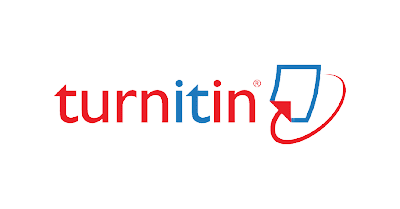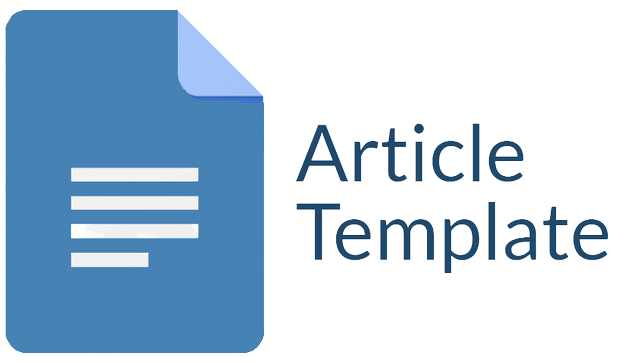MANAJEMEN STRATEGIS KOMUNIKASI HUMAS DALAM MENINGKATKAN CITRA POSITIF DINAS KETENAGAKERJAAN KOTA BANDUNG
Abstract
Humas' strategic communication management plays a crucial role in enhancing the positive image of the Bandung Employment Service. First of all, there is a need for a deep understanding of the external and internal environments that can affect the image of the service. This research is to describe and analyse about Strategic Management of Human Communication in Improving the Positive Image of Employment Services, covering formulation, implementation and evaluation. This research uses a qualitative approach in which this research aims to analyze issues of strategic management of communication in enhancing a positive image. The research methods used in this research are descriptive methods. The location that will be the object of this research is the Government Intension located in Bandung City. The location of this research is located at the Bengal City Employment Service, located at R.A. A. Marta State No.4, Turangga, Lengkong District, Bandung City, West Java 40264. Integrating well-planned communication, this strategy is able to create message alignment across communication channels, forming a more positive public perception of the role and contribution of the Labour Service. The strategic role of communication proved to be a major driver, linking communication activities with the long-term vision of the institution and building a strong reputation. Responsiveness to the needs of the community, supported by the use of modern communication technologies, provides the ability to engage more effectively and respond quickly to emerging issues.
Downloads
References
Akuntono, I. (2012, 01 09). Mengenal Jenis-Jenis Beasiswa. Retrieved from Kompas.com: https://edukasi.kompas.com/read/2012/01/09/09071249/Mengenal.Jenis-jenis.Beasiswa
Anggraini, P. D., & Wulandari, S. S. (2020). Analisis Penggunaan Model Pembelajaran Project Based Learning Dalam Peningkatan Keaktifan Siswa. Jurnal Pendidikan Administrasi Perkantoran (JPAP), 9(2), 292–299. https://doi.org/10.26740/jpap.v9n2.p292-299
Ayudia, A. P., & Wulandari, S. S. (2021). Strategi Komunikasi Humas Dalam Meningkatkan Citra Pemerintah Kota Probolinggo. Journal of Office Administration: Education and Practice, 1(2), 249–268.
Chandra, R. (2016). Dasar-dasar manajemen. Medan: Perdana Publishing.
Hamidah, H., Rabbani, T. A. S., Fauziah, S., Puspita, R. A., Gasalba, R. A., & Nirwansyah. (2019). Modul Model Pembelajaran Berbasis Proyek Berorientasi HOTS. SEAMEO QTEP in Language.
Herlina, S. (2015). Strategi komunikasi humas dalam membentuk citra pemerintahan di kota malang. Jurnal Ilmu Sosial Dan Ilmu Politik (JISIP), 4(3).
Kholisoh, N., & Yenita, Y. (2015). Strategi Komunikasi Public Relations dan Citra Positif Organisasi (Kasus Public Relations Rumah Sakit “X” di Jakarta). Jurnal Ilmu Komunikasi, 13(3), 195–209.
Kristanti, Y. D., Subiki, & Handayani, R. D. (2016). Model PembelajaranBerbasis Proyek (Project Based Learning Model) pada Pembelajaran Fisika di SMA. Jurnal Pembelajaran Fisika, 5(2), 122–128.
Lestari, I., & Zakiah, L. (2019). Kreativitas dalam Konteks Pembelajaran. Erzatama Karya Abadi.
Moleong, L.J. 2017. Metode Penelitian Kualitatif. Bandung: PT. Remaja Rosdakarya.
Muthmainnah, V. N. (2023). Pengaruh Beasiswa Terhadap Prestasi Belajar Siswa. Management Of Education, ISSN (p): 2442-4048 | ISSN (e): 2808-408X.
Putera, A. R. (2022). Penjaminan Mutu Pendidikan. Kalimantan Selatan: CV. AHBAB PUSTAKA.
Putra. (2023, Juli 12). Unsur Unsur Manajemen: Pendapat Para Ahli dan Penjelasannya. Retrieved from Artikel Pendidikan: https://artikelpendidikan.id/unsur-unsur-manajemen/
Rahmawan, Fauzi Praja. 2016. Efektivitas Penyampaian Informasi Program Character Building Pada Penerima Beasiswa Plus PT. Djarum Regional Bandung. Universitas Pendidikan Indonesia. Repository.upi.edu
Rohiat, 2012, Manajemen Sekolah, Bandung: Revika Aditama
STAIN Kediri, Pedoman Penulisan Karya Ilmiah (Kediri: STAIN Press, 2016), 71. https://penerbitdeepublish.com/reduksi-data
Sugiyono. (2018). Metode Penelitian Kuantitatif, Kualitatif, dan R&D. Bandung: Alfabeta.
S. Margono, 2004, Metodologi Penelitian Pendidikan, Jakarta, Rineka Cipta. Sudarwan Danim dan Suparno, 2012, Menjadi Pemimpin Besar Visioner Berkarakter, Bandung: Alfabeta.
Sudaryono, 2013, Gaguk Margono, Wardani Rahayu, Pengembangan Instrumen Penelitian Pendidikan, Yogyakarta: Graha Ilmu.
Sugiono, 2005,Metode Penelitian Kualitatif, Bandung: Alfabeta.
Copyright (c) 2024 Ricky Yoseptry, Teti Ratnawulan, Indra Suryana, Ferry Wibowo, M. Idris Wikarso

This work is licensed under a Creative Commons Attribution-ShareAlike 4.0 International License.
Jurnal allows anyone to compose, correct, and do derivative works, even for commercial purposes, as long as they credit for the original work. This license is the freest. It is recommended for maximum distribution and use of licensed material.
The submitted paper is assumed not to contain any proprietary materials that are not protected by patent rights or patent applications; The responsibility for technical content and protection of proprietary materials rests with the authors and their organizations and not the responsibility of journal or its editorial staff. The primary (first/appropriate) author is responsible for ensuring that the article has been viewed and approved by all other authors. The author's responsibility is to obtain all necessary copyright waivers to use any copyrighted material in the manuscript before submission.
Jurnal Pendidikan, Sains dan Teknologi allows the author(s) to hold the copyright without restrictions and allow the author(s) to retain publishing rights without restrictions. Jurnal Pendidikan, Sains dan Teknologi CC-BY-SA or an equivalent license as the optimal license for the publication, distribution, use, and reuse of scholarly work. Jurnal Pendidikan, Sains dan Teknologi allows the author(s) to hold the copyright without restrictions and allow the author(s) to retain publishing rights without restrictions. Jurnal Pendidikan, Sains dan Teknologi CC-BY-SA or an equivalent license as the optimal license for the publication, distribution, use, and reuse of scholarly work.
In developing strategy and setting priorities Jurnal Pendidikan, Sains dan Teknologi recognize that free access is better than priced access, libre access is better than free access, and libre under CC-BY-SA or the equivalent is better than libre under more restrictive open licenses. We should achieve what we can when we can. We should not delay achieving free in order to achieve libre, and we should not stop with free when we can achieve libre.
Jurnal Pendidikan, Sains dan Teknologi is licensed under a Creative Commons Attribution-ShareAlike 4.0 International License.
You are free to:
- Share a copy and redistribute the material in any medium or format
- Adapt a remix, transform, and build upon the material for any purpose, even commercially.
- The licensor cannot revoke these freedoms as long as you follow the license terms.






